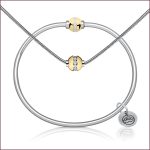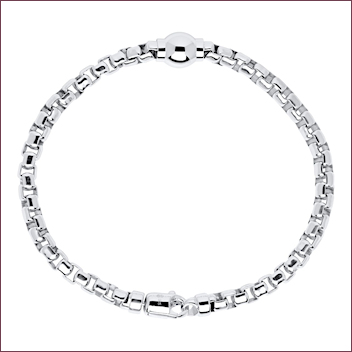Diverse, Inclusive, Accessibility

Diversity and inclusion have been amplified by the voices of the younger generations on social media.
Millennials and Gen Zers form the most ethnically and racially diverse adult group in U.S. history, with Gen Z making up 27% of the American population, of which 47% is ethnically diverse. By 2026, the majority of this generation is expected to be non-white
Many consumers, especially Generations Y and Z are rewarding brands that capture diversity, share their inclusive values, and espouse causes that support social equity, reported eMarketer in November.
Embracing and reflecting real-world diversity not only boosts a company’s internal operations, it also helps marketers build greater brand affinity and deeper customer relationships.
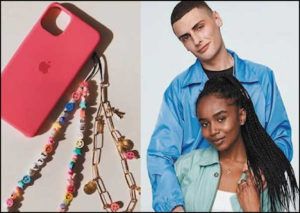
The Plumb Club (TPC) Industry & Market Insights 2021 report, which included a survey of 1,000 U.S. jewelry consumers, advocates for brands to express diversity and inclusivity in their business strategy, from staffing and leadership to marketing and outreach.
Inclusive Means Accessible
Consumers want inclusivity, gender, and socio-cultural sensitivity from brands, reports TPC Insights, giving them access to new opportunities. Undoubtedly, the pandemic accelerated the digitalization of the jewelry industry even further. The report notes that the trade has been slow to move into the digital realm, faced with substantial advancement in e-commerce and social media engagement.
In June 2020, Boston Consulting Group reported that a 14% increase in U.S. first-time online shoppers was a sign of accelerated sales channel shifts and the digitalization of the jewelry industry, cites TPC Insights. Mobile social media sales increased greatly, pushing brands to create an optimal online presence, with special customer attention through customization and community building.
Many consumers, particularly Generations Y and Z actively balance their physical, digital and virtual spaces by effectively merging platforms, allowing brands to re-purpose experiences, finds TPC Insights. Responsible agility and targeted responsiveness are key strategies to attract consumers, cites the report.
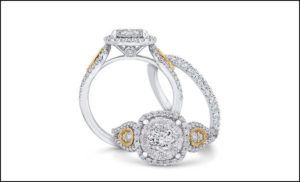
Jewelry companies are experimenting with virtual reality experiences including browsing jewelry in a virtual showroom, as well as artificial intelligence technology like virtual try on, enhancing the e-commerce channels and growing the customer experience. Technology plays a key role in jewelry purchases even when they are made in-store, finds TPC Insights.
Harry Shah of Shah Luxury finds accessibility to the jewelry industry has expanded because of technology, the kind of technology that allows consumers to imagine what their design would look like on their finger with virtual try on or archives the process of how a custom piece was made, accessed via smart phone scan of a QR code on a “Storybook Card” that tells the journey of piece.
These tools have helped Shah Luxury grow at an incredible pace this year, with Shah describing it as the best eight months the company has had in the last eight years. He shares that more than 40% of Shah’s business is “As You Wish” custom work, with 90% bridal special orders. He attributes Shah’s success to quality products, great service, quick turnaround, and the right technology that make their retail partners successful.
Gender Neutral Opens Access
With fashion embracing androgynous styles and “unisex” the buzzword for inclusion and diversity, there’s definitely a strong crossover in jewelry for men and women. Gender neutral is a big part of the ongoing creative rebellion against pigeonholing wearers into boxes.
Valerie Fletcher, vice president of design and product development for Original Design Inc. (ODI), describes the styling as “clean, classic, streamlined, and sized to be wearable on all body types,” which is an important underscore. She cites growing demand and sales for men’s jewelry, and the cross marketing of gender-neutral styles like diamond studs, gold chains, and signet and band rings.
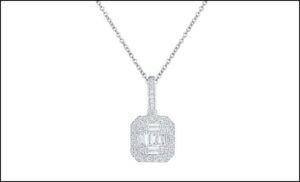 Consumers have been clear that they don’t want to conform to what brands think they should be wearing, like slender width rings and delicate profiles for women, and thicker, heavier looks for men, says Harry Fiorentinos, director of sales and marketing for Novell Global. “Some women love wider width bands, while some men like narrower styles.” The brand’s new collections are all encompassing, supported by e-catalogs.
Consumers have been clear that they don’t want to conform to what brands think they should be wearing, like slender width rings and delicate profiles for women, and thicker, heavier looks for men, says Harry Fiorentinos, director of sales and marketing for Novell Global. “Some women love wider width bands, while some men like narrower styles.” The brand’s new collections are all encompassing, supported by e-catalogs.
Cora Lee Colaizzi, marketing director and senior merchandiser for Quality Gold concurs with Fiorentinos, that stackable ring styles continue to fuel this cross pollination. She cites stackable 2mm to 3mm width, white and rose gold bands, sizes 4-13, have been bestsellers across demographics.
Perhaps the most poignant quote that underscores a gender-neutral attitude to wear what you like was given by English singer Harry Styles, 27, known for wearing cultured pearls: “If I see a nice shirt, and get told it’s for ladies, I think, okay? That doesn’t make me want to wear it less though. The moment you feel more comfortable with yourself, it all becomes a lot easier.”
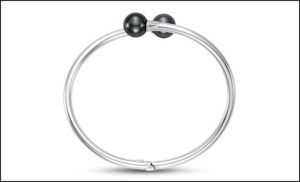
The pearl category, and the trend of Gen Y and Z male celebrities wearing pearls, like Styles, often photographed donning a strand of round, white pearls or dangling a bold pearl drop earring. According to a recent pearl survey conducted by MVI Marketing for the Cultured Pearl Association of America, of over 1,000 jewelry consumers (27% male), 37% of the men said they have and would wear pearls. In fact, men aged 25-45 embrace pearls the most, 42%-47%.
Sarah Cuidon, production and sales assistant for the pearl house Mastoloni, finds pearls to be the most accessible gem in jewelry today, a favorite across age, gender, ethnic background and household income, revealed in the recent pearl study. She hails pearls so accessible because they work day and night, for any occasion or wardrobe choice.
Sustainable Means Long Term
Pearls also have a sustainable story, Cuidon notes. People are drawn to what pearl symbolizes, that it’s an organic gem, the environmental stewardship needed to produce the best pearls, and that pearl cultivation brings economic opportunity to remote communities.
TPC Insights underscores a heightened social and environmental consciousness, as we emerge from COVID. The report cites a rise in “slow design” using natural materials in raw forms, reducing processed materials and carbon footprints along the way. It identifies recycled gold, ethically mined-gems, responsibly cultured pearls, traceable conflict-free diamonds, and lab-grown diamonds as the base for “new age” jewels.
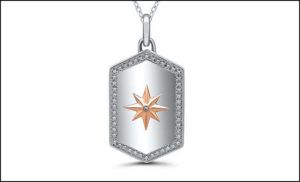 Good design that does good for people and the planet reflects the changing times and momentum created by a new generation of activists speaking out against discrimination and racism; and concerned about climate change, cites TPC Insights. This has led consumers, especially aged 25-45, to expect more from the brands they support, including a shared social consciousness.
Good design that does good for people and the planet reflects the changing times and momentum created by a new generation of activists speaking out against discrimination and racism; and concerned about climate change, cites TPC Insights. This has led consumers, especially aged 25-45, to expect more from the brands they support, including a shared social consciousness.
Consumers overwhelmingly feel sustainability in a jewelry purchase is important, according to the survey, with 20 percent rating it a 10, most important that their jewelry be responsibly sourced. The average was 6.5 on a scale of 1 to 10. Nearly three quarters (72%) would be willing to pay a moderate to great deal more for a piece of jewelry that was sustainably sourced.
The many manufacturers showing lab-grown diamonds (for private label and their branded collections) in The Plumb Club pavilion at JCK Las Vegas late August — including Quality Gold with True Origin LGD brand, Ostbye with Eco-Brilliance, SDC with Crafted Carats — reported strong interest and actual sales for lab-grown diamonds at the show.
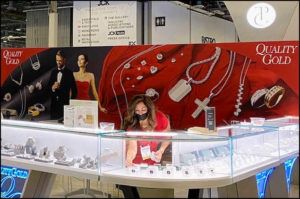 Jewelers attending JCK, the majority of which were independents, are embracing lab-grown diamonds to offer choice and open access to their customers, finds Colaizzi. “The questions jewelers are asking now have moved from, ‘is it real’ and ‘is the color good’ to “how do I get started” and “tell me about GCAL 8X diamond cut grade stones.” She also finds more jewelers requesting and seeking designs set with lab-created color stones and diamonds, which Quality Gold launched at JCK to great success.
Jewelers attending JCK, the majority of which were independents, are embracing lab-grown diamonds to offer choice and open access to their customers, finds Colaizzi. “The questions jewelers are asking now have moved from, ‘is it real’ and ‘is the color good’ to “how do I get started” and “tell me about GCAL 8X diamond cut grade stones.” She also finds more jewelers requesting and seeking designs set with lab-created color stones and diamonds, which Quality Gold launched at JCK to great success.

